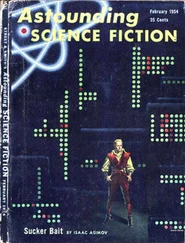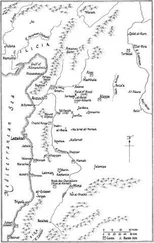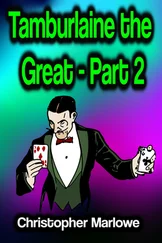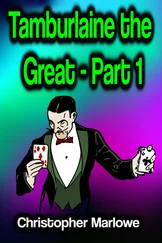Most of the surviving modern animals have their origins in this grand Cambrian burgeoning, but until 1909 we were unable to view them in anything like their original habitat. Until then, also, we had to rely upon the evidence mainly of bones and shells, whereas the Burgess shale contains much fossilized “soft anatomy,” including the contents of digestive systems. It is a sort of Rosetta Stone for the decoding of life forms.
Our own solipsism, often expressed in diagram or cartoon form, usually represents evolution as a kind of ladder or progression, with a fish gasping on the shore in the first frame, hunched and prognathous figures in the succeeding ones, and then, by slow degrees, an erect man in a suit waving his umbrella and shouting “Taxi!” Even those who have observed the “sawtooth” pattern of fluctuation between emergence and destruction, further emergence and still further destruction, and who have already charted the eventual end of the universe, are half agreed that there is a stubborn tendency toward an upward progression. This is no great surprise: inefficient creatures will either die out or be destroyed by more successful ones. But progress does not negate the idea of randomness, and when he came to examine the Burgess shale, the great paleontologist Stephen Jay Gould arrived at the most disquieting and unsettling conclusion of all. He examined the fossils and their development with minute care and realized that if this tree could be replanted or this soup set boiling again, it would very probably not reproduce the same results that we now “know.”
It may be worth mentioning that this conclusion was no more welcome to Gould than it is to you or to me: in his youth he had imbibed a version of Marxism and the concept of “progress” was real to him. But he was too scrupulous a scholar to deny the evidence that was so plainly displayed, and while some evolutionary biologists are willing to say that the millimetrical and pitiless process had a “direction” toward our form of intelligent life, Gould subtracted himself from their company. If the numberless evolutions from the Cambrian period could be recorded and “rewound,” as it were, and the tape then played again, he established there was no certainty that it would come out the same way. Several branches of the tree (a better analogy would be with small twigs on an extremely dense bush) end up going nowhere, but given another “start” they might have blossomed and flourished, just as some that did blossom and flourish might equally well have withered and died. We all appreciate that our nature and existence is based upon our being vertebrate. The earliest known vertebrate (or “chordate”) located in the Burgess shale is a two-inch and rather elegant creature named, after an adjoining mountain and also for its sinuous beauty, Pikaia gracilens . It was originally and wrongly classified as a worm (one must never forget how recent most of our knowledge really is), but in its segments, muscularity, and dorsal-rod flexibility it is a necessary ancestor that yet demands no worship. Millions of other life forms perished before the Cambrian period was over, but this little prototype survived. To quote Gould:
Wind the tape of time back to Burgess times, and let it play again. If Pikaia does not survive in the replay, we are wiped out of future history—all of us, from shark to robin to orangutan. And I don’t think that any handicapper, given Burgess evidence as known today, would have granted very favorable odds for the persistence of Pikaia .
And so, if you wish to ask the question of the ages—why do humans exist?—a major part of the answer, touching those aspects of the issue that science can treat at all, must be: because Pikaia survived the Burgess decimation. This response does not cite a single law of nature; it embodies no statement about predictable evolutionary pathways, no calculation of probabilities based on general rules of anatomy or ecology. The survival of Pikaia was a contingency of “just history.” I do not think that any “higher” answer can be given, and I cannot imagine that any resolution could be more fascinating. We are the offspring of history, and must establish our own paths in this most diverse and interesting of conceivable universes—one indifferent to our suffering, and therefore offering us maximum freedom to thrive, or to fail, in our own chosen way.
A way “chosen,” one must add, within very strictly defined limits. Here is the cool, authentic voice of a dedicated scientist and humanist. In a dim way, we knew all this already. Chaos theory has familiarized us with the idea of the unscripted butterfly wing-flap that, stirring a tiny zephyr, eventuates in a raging typhoon. Saul Bellow’s Augie March shrewdly observed the fritillary corollary that “if you hold down one thing, you hold down the adjoining.” And Gould’s mind-stunning but mind-opening book on the Burgess shale is entitled Wonderful Life , a double entendre with an echo of the best-loved of all American sentimental movies. At the climax of this engaging but abysmal film, Jimmy Stewart wishes he had never been born but is then shown by an angel what the world would be like if his wish had been granted. A middlebrow audience is thus given a vicarious glimpse of a version of Heisenberg’s principle of uncertainty: any attempt to measure something will have the effect of minutely altering that which is being measured. We have only recently established that a cow is closer in family to a whale than to a horse: other wonders certainly await us. If our presence here, in our present form, is indeed random and contingent, then at least we can consciously look forward to the further evolution of our poor brains, and to stupendous advances in medicine and life extension, derived from work on our elementary stem cells and umbilical-cord blood cells.
In the steps of Darwin, Peter and Rosemary Grant of Princeton University have gone for the past thirty years to the Galápagos Islands, lived in the arduous conditions of the tiny island of Daphne Major, and actually watched and measured the way that finches evolved and adapted as their surroundings changed. They have shown conclusively that the size and shape of the finches’ beaks would adjust themselves to drought and scarcity, by adaption to the size and character of different seeds and beetles. Not only could the three-million-year-old original flock change in one way, but if the beetle and seed situation changed back, their beaks could follow suit. The Grants took care, and they saw it happening, and could publish their findings and proofs for all to see. We are in their debt. Their lives were harsh, but who could wish that they had mortified themselves in a holy cave or on top of a sacred pillar instead?
In 2005, a team of researchers at the University of Chicago conducted serious work on two genes, known as microcephalin and ASPM, that when disabled are the cause of microcephaly. Babies born with this condition have a shrunken cerebral cortex, quite probably an occasional reminder of the period when the human brain was very much smaller than it is now. The evolution of humans has been generally thought to have completed itself about fifty to sixty thousand years ago (an instant in evolutionary time), yet those two genes have apparently been evolving faster in the past thirty-seven thousand years, raising the possibility that the human brain is a work in progress. In March 2006, further work at the same university revealed that there are some seven hundred regions of the human genome where genes have been reshaped by natural selection within the past five thousand to fifteen thousand years. These genes include some of those responsible for our “senses of taste and smell, digestion, bone structure, skin color and brain function.” (One of the great emancipating results of genomics is to show that all “racial” and color differences are recent, superficial, and misleading.) It is a moral certainty that between the time I finish writing this book and the time that it is published, several more fascinating and enlightening discoveries will be made in this burgeoning field. It may be too soon to say that all the progress is positive or “upward,” but human development is still under way. It shows in the manner in which we acquire immunities, and also in the way in which we do not. Genome studies have identified early groups of northern Europeans who learned to domesticate cattle and acquired a distinct gene for “lactose tolerance,” while some people of more recent African descent (we all originate from Africa) are prone to a form of sickle-cell anemia which, while upsetting in and of itself, results from an earlier mutation that gave protection against malaria. And all this will be further clarified if we are modest and patient enough to understand the building blocks of nature and the lowly stamp of our origins. No divine plan, let alone angelic intervention, is required. Everything works without that assumption .
Читать дальше












